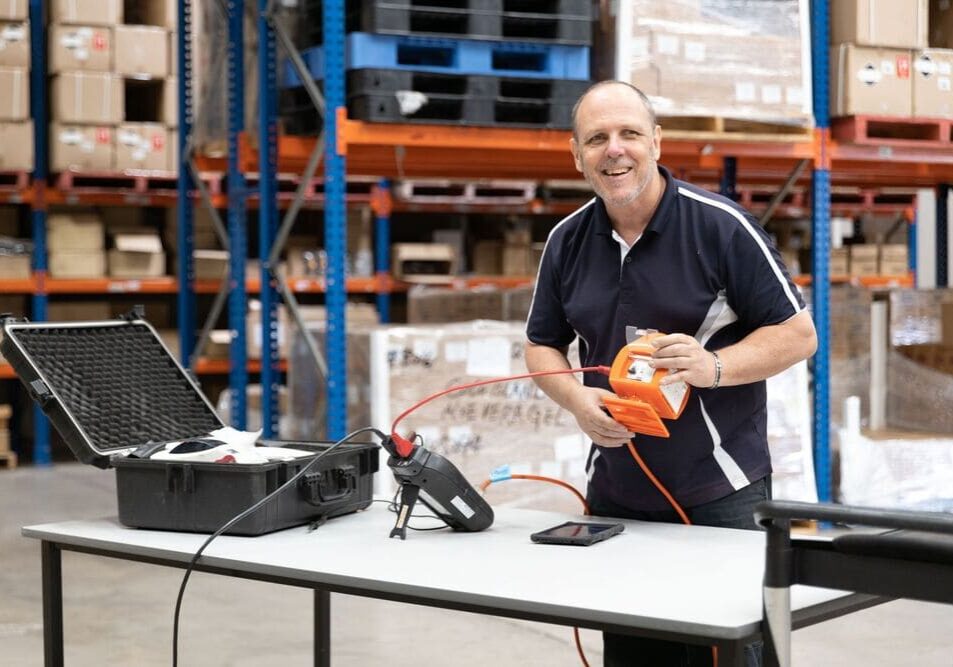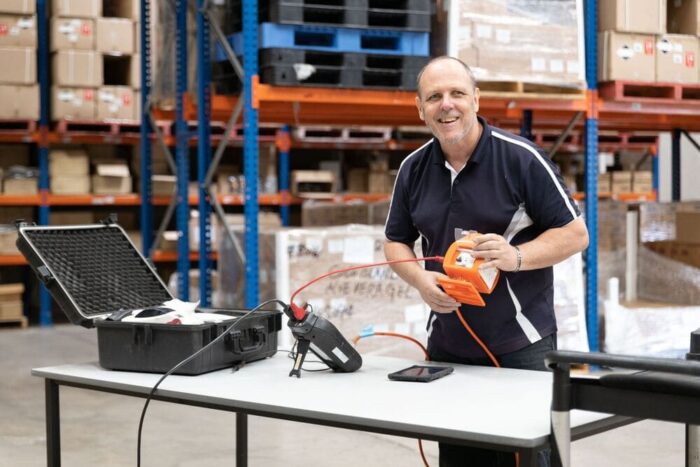Guidelines for testing and tagging in Australia
Testing and tagging in Australia is carried out in line with AS/NZS 3760:2022, which outlines the procedures for inspecting and testing portable electrical equipment and residual current devices (RCDs) in most workplace environments. The required frequency of testing depends on the level of risk associated with the environment—for example, equipment used in offices may only need testing every few years, while tools used in harsher conditions require more frequent checks.
For construction and demolition sites, AS/NZS 3012:2019 (supersedes AS/NZS 3012:2010) applies. This standard mandates testing every three months and includes specific requirements such as colour-coded tagging to ensure compliance and improve on-site safety. Understanding which standard applies to your workplace is essential for meeting WHS obligations and maintaining safe equipment.
Portable items needing testing and tagging in Australia
Portable electrical appliances are used in a wide range of Australian workplaces, including construction sites, workshops, offices, schools, and hospitality venues. Because these items are regularly moved, shared, or operated in demanding conditions, they face an increased risk of damage or malfunction over time.
Under national Work Health and Safety (WHS) legislation, it is the responsibility of the Person Conducting a Business or Undertaking (PCBU) to manage this risk by ensuring all portable equipment is safe and maintained in accordance with the relevant standards.
Test and Tag requirements of power tools
Power tools such as drills, saws, grinders, and sanders are essential on construction, mining, and demolition sites. These tools are frequently handled, transported between job locations, and exposed to dust, moisture, and physical impact. Due to these conditions, they are more susceptible to electrical faults or mechanical damage compared to equipment used in controlled environments.
AS/NZS 3012:2019 outlines mandatory testing and tagging requirements for all electrical equipment used in construction and demolition. Power tools in these industries must be tested every three months to ensure they remain safe for use. The standard also specifies the use of colour-coded tags, which change each quarter to make it easier to identify when an item was last tested. These colours apply nationally and provide an immediate visual indicator of compliance, helping to prevent the use of out-of-date or untested tools.
In other industries, such as manufacturing or maintenance, the required frequency of testing may vary depending on the environment and the nature of the work. However, regular inspection and documentation remain critical to reducing risk and meeting workplace health and safety obligations.
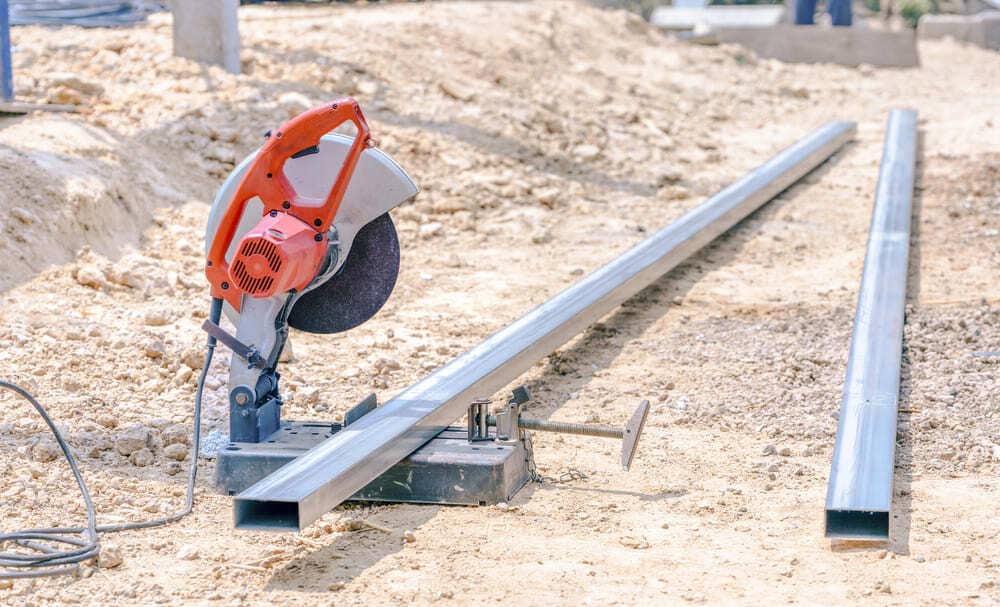
Extension leads
Extension cords are one of the most commonly damaged electrical items and are often overlooked during testing. Because they lie on the ground, they are prone to crushing, cuts, or exposure to moisture. Damaged extension leads can cause electric shock, equipment failure, or fire if not identified and removed from service.
Domestic-grade extension leads are not suitable for use on construction or demolition sites, as they are not built to withstand the physical and environmental demands of those settings. Instead, construction sites must use heavy-duty, industrial-rated leads that comply with relevant safety standards. All extension leads used in the workplace, regardless of the industry, must be tested and tagged at the same interval as the equipment they supply.
Power boards
Power boards are frequently used in workplaces. Power boards should be tested and tagged according to the environment in which they are used. Domestic-type power boards, double adaptors, and piggyback adaptors are not permitted on construction and demolition sites as outlined in SafeWork NSW’s Electrical Practices on Construction and Demolition Sites fact sheet.
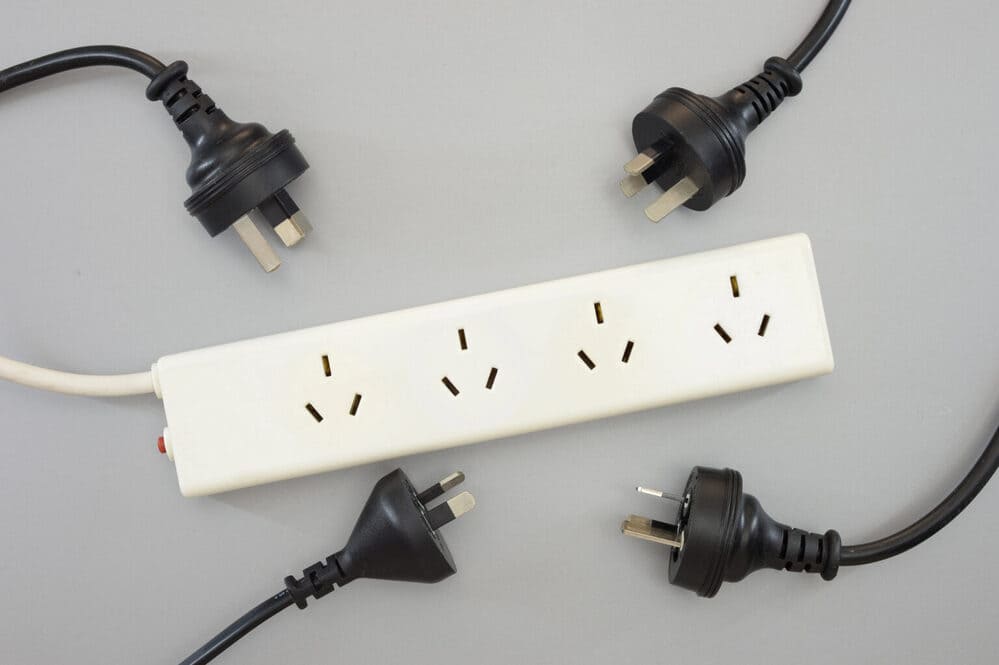
Kitchen appliances
Commercial kitchen appliances, including toasters, kettles, microwaves, sandwich presses, and benchtop fryers, are commonly used in hospitality, staff rooms, and food preparation areas. These items are often exposed to heat, moisture, and heavy use, which can increase the chance of faults.
In a commercial or shared kitchen, portable kitchen appliances should be tested at least every 12 months. In high-risk environments, such as catering on construction sites, testing may be required every three months.
Office equipment
Office environments typically contain computers, monitors, printers, phone chargers, and desk fans. While these settings are considered low-risk, appliances are still subject to movement, especially during desk changes or relocations.
In these cases, testing and tagging is usually required every five years, unless damage is observed or the equipment is relocated to a higher-risk area. Some businesses choose shorter intervals to maintain a consistent safety schedule across all equipment.
Cleaning equipment
Vacuum cleaners, carpet cleaners, floor polishers, and steam cleaners are all portable devices commonly used by cleaning contractors and in-house maintenance teams. These items are regularly moved from site to site and may experience physical strain, exposure to water, or mechanical wear.
Cleaning equipment is generally tested every 6 to 12 months, depending on the usage environment. Equipment used in wet or industrial settings may require more frequent checks.
Portable lighting
Portable lighting, such as work lights or inspection lamps, is commonly used in construction, maintenance, and emergency response. These lights can be exposed to rough handling, heat, or unstable surfaces, increasing the chance of damage.
On construction sites, portable lighting must be tested and tagged every three months. In other settings, such as workshops or temporary installations, intervals may vary based on risk assessment.
Portable heaters
As portable heaters are used seasonally and often stored for extended periods, it is important to remember to test and tag this equipment, as prolonged storage and infrequent use can allow hidden faults to go unnoticed. Older heaters, in particular, may rely on outdated internal wiring or degraded insulation, increasing the risk of overheating or electrical failure. Regular movement and exposure to heat can also cause wear to cords, plugs, and internal components. Portable heaters should be visually inspected before use and tested every 12 months, or more frequently in high-use or higher-risk environments.
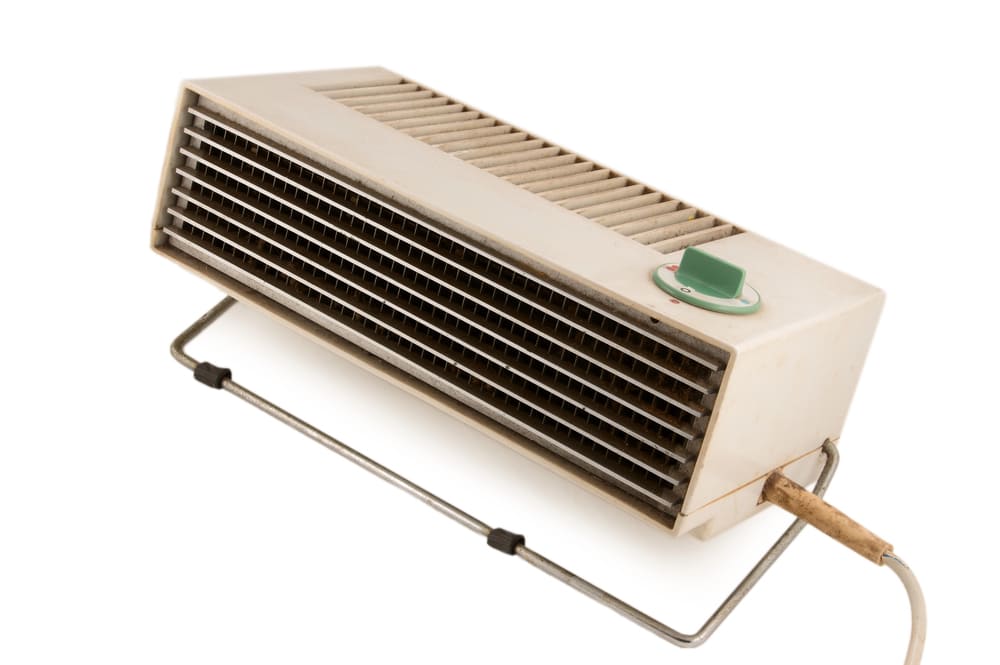
Portable fans
Like other portable items, fans are frequently moved and can be subject to cord damage or internal faults.
Testing every 12 months is generally sufficient for fans used in low-risk environments. More frequent testing may be required for fans used in industrial areas or outdoors.
Does new equipment require testing and tagging?
According to AS/NZS 3760, new electrical equipment does not require testing before use if it is supplied with documentation confirming it is new and safe. However, it must be tagged with a “New to Service” label that includes the date it was introduced into the workplace.
Choosing the right test and tag company for your business
Testing and tagging of portable electrical items is about keeping your people safe, avoiding downtime, and maintaining compliance with WHS requirements. When choosing a provider, look for someone who is familiar with your industry’s risk profile, uses calibrated equipment, and provides clear records of testing history.
Keeping portable electrical equipment safe and compliant
Portable electrical appliances are a convenient and essential part of modern workplaces, but their mobility makes them more prone to wear and electrical faults. Every portable item used in a business setting should be tested and tagged at regular intervals based on the environment in which it is used.
Experienced test and tag providers in Sydney, such as Precision Test and Tag, can help assess your equipment, advise on the correct testing frequency, and ensure you meet all compliance requirements. If you are unsure where to start, get in touch to arrange a site visit.

